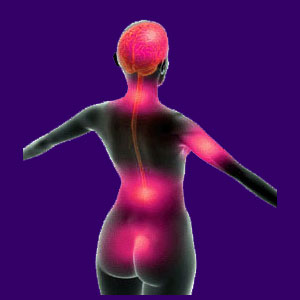
Facet syndrome exercises are a form of conservative treatment for this common degenerative spinal condition. Facet joint syndrome occurs when osteophytes build up around the facet joints, usually due to arthritic changes in the spine, causing possible impingement on the spinal nerves or mechanical discomfort upon movement.
While facet degeneration is a common condition, especially in elderly individuals, the percentage of patients who actually experience painful symptoms is low. This makes facet syndrome another extremely common back pain scapegoat which is blamed for causing far more cases of dorsalgia than it truly creates. Regardless of the cause of pain, exercise therapy is one of the more common paths to treatment.
The scope of this article will look at the pros and cons of using physical therapy for diagnosed cases of facet joint arthrosis.
Facet Syndrome Exercises Theory
Exercise is a common conservative approach to back pain relief for many spinal conditions. In the case of facet syndrome, exercise can help to strengthen surrounding tissue, increase blood flow and wear down some of the buildup of osteophyte material caused by long periods of inactivity.
Exercise will rarely be a cure for facet syndrome, but can be a valuable part of a combined treatment program for patients with actual physically-enacted spinal joint pain. It will not reverse degenerative processes in the spine, nor will it prevent further arthritic changes.
Like in many other spinal conditions, the exact reasons for prescribing exercise therapy are less than specific and sometimes may be downright mysterious. In a great number of cases, there needs to be a certain effort made towards conservative treatment before health insurance will cover a major surgical procedure. When considering physical therapy for severe facet deterioration, this factors into the mix prominently.
Facet Joint Syndrome Exercises
Facet joint arthritis is statistically proven to rarely be the source of severe chronic back pain. Therefore, there must be some other explanation. This means that the diagnosis of facet arthritis may not correctly identify the real source of suffering.
For some, different structural issues are causative, while in others, psychological back pain may be the root source. Exercise will not help these patients, nor will any other form of inappropriately targeted medical or alternative treatment. Treatments such as exercise might have a short term placebo effect, but will certainly not cure the underlying causative emotional or physical issues in most instances.
Now let’s assume that the diagnosis of facet deterioration is actually the reason for pain. Exercise may help provide some previously mentioned health benefits and may even help to smooth out joint movement. However, all is not positive. Exercising a severely degenerated joint will likely be excruciatingly painful. The small structural benefits which may be enacted will come at a huge price in terms of suffering. No long-term benefit will be provided to the joint by physical therapy which eventually ceases. Degeneration will continue and may even escalate with irritating joint exercise. Of all treatments, the illogical recommendation for exercise is perhaps one of the strangest choices, were it not for the prerequisite attempts at conservative care prior to covered surgical interventions.
Considerations for Facet Syndrome Exercises
Extreme facet arthropathy can cause physical pain. Patients with actual facet joint pain may be helped by some traditional medical and complementary health treatments, including exercise. However, the benefit to drawback ratio may be too close to call, since the downsides of exercise for spinal joint pain can be considerable, especially from a patient’s perspective.
It may not sound like my usual philosophy, but my experience shows that in the rare cases of truly symptomatic severe facet degeneration, minimally invasive surgical care is one of the most effective ways of resolving symptoms. Invasive facet joint procedures are usually well tolerated and when the diagnosis is correct, will almost always cure the patient. Meanwhile, exercise will provide little lasting benefit for actual cases of symptomatic joint deterioration and may be horribly painful to endure during therapy. This is certainly not a recommendation or endorsement for surgery. It is merely an observation of a prescribing practice which seems to make little sense for many patients.
As a final note, when exercise is particularly effective for facet syndrome relief, it is usually because the diagnostic conclusion is incorrect. Exercise will increase regional circulation and this can stave off the effects of ischemia, which is one of the main actual causes of symptoms in cases of misdiagnosed facet arthritis.





